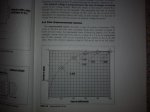130915-2356 EDT
Eddy Current:
Your problem is still that you don't start with basics.
The equations for the type of exponential curves you are looking at are:
x1 = K1*e^(-t/K2)
and
x2 = (1-K1*e^(-t/K2) )
where K1 and K2 are constants, and t is the independent variable time. e is a constant approximately equal to 2.718281828 . This should be available in most scientific calculators.
In finite time x1 will never equal K1, but it will get very close.
In finite time x2 will never equal 0, but it will get very close.
x1 is said to asymptotically approach K1 as time increases.
See
http://en.wikipedia.org/wiki/Asymptote
In electrical circuits K2 is called the time constant. When t=K2 the value of e^(-1) = 0.367879441 (about).
When t = 5 time constants e^(-5) = 0.00674 (about) and at 10 time constants about 0.0000454 .
You have not adequately described your problem, but suppose it is a series LR circuit that ultimately after a long time (much longer than your 100 mS) reaches 1.5 A, and using your values and assuming 5 time constants at 100 mS, then at:
1 time constant- i = 1.5*0.632120559 = 0.948181 your value was 0.948 .
2 time constants i = 1.5*0.864664717 = 1.296997 your value was 1.297 .
3 time constants i = 1.5*0.950212932 = 1.425319 your value was 1.425 .
Jump to
5 time constants i = 1.5*0.993262953 = 1.489893 your value was 1.489 .
Your values are good based on the assumptions I made. And if the values match the curve, then 5 time constants at 100 mS is a good assumption.
.





